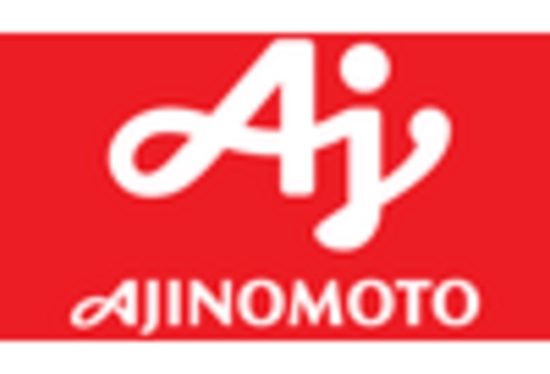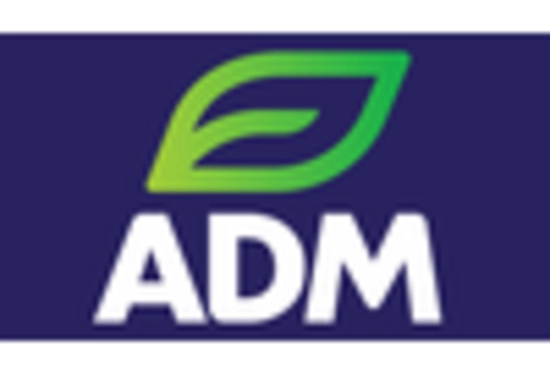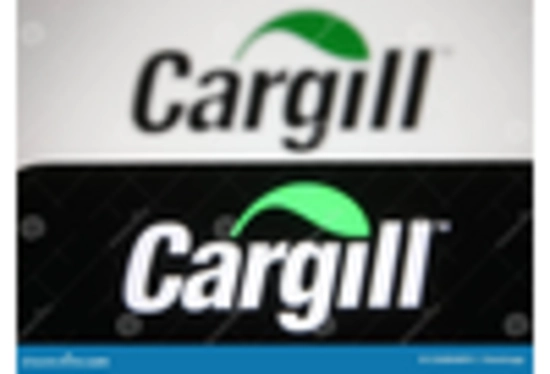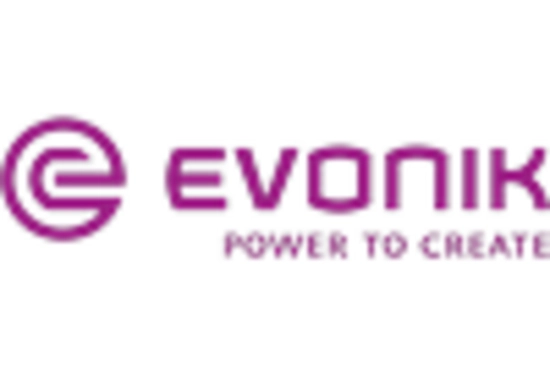Advancements in Biotechnology
The Food Amino Acids Market is poised for growth due to advancements in biotechnology that enhance the production and quality of amino acids. Innovative biotechnological processes allow for more efficient and sustainable production methods, which can lead to cost reductions and improved product quality. These advancements are particularly relevant in the context of plant-based amino acids, which are gaining traction among consumers seeking sustainable and ethical food sources. Market analysis indicates that the biotechnology sector within the food industry is expected to grow at a compound annual growth rate of around 9%, suggesting a favorable environment for the Food Amino Acids Market. As companies adopt these technologies, they may be able to offer a wider range of high-quality amino acid products, catering to diverse consumer preferences.
Expansion of Sports Nutrition
The Food Amino Acids Market is significantly influenced by the expansion of the sports nutrition sector. With an increasing number of individuals engaging in fitness activities and sports, there is a heightened demand for products that enhance performance and recovery. Amino acids, particularly branched-chain amino acids (BCAAs), are recognized for their role in muscle recovery and growth, making them a staple in sports nutrition products. Market data indicates that the sports nutrition segment is expected to witness a growth rate of around 10% annually, further propelling the Food Amino Acids Market. This trend is likely to encourage manufacturers to develop specialized formulations that cater to athletes and fitness enthusiasts, thereby expanding their market reach.
Increasing Health Consciousness
The Food Amino Acids Market is experiencing a notable surge in demand driven by increasing health consciousness among consumers. As individuals become more aware of the importance of nutrition, there is a growing inclination towards dietary supplements and functional foods that contain amino acids. This trend is particularly evident in regions where lifestyle diseases are on the rise, prompting consumers to seek out products that support overall health and wellness. According to recent data, the amino acids segment in dietary supplements is projected to grow at a compound annual growth rate of approximately 8% over the next few years. This shift towards health-oriented products is likely to bolster the Food Amino Acids Market, as manufacturers respond by innovating and expanding their offerings to meet consumer demands.
Rising Popularity of Functional Foods
The Food Amino Acids Market is benefiting from the rising popularity of functional foods, which are designed to provide health benefits beyond basic nutrition. Consumers are increasingly seeking foods that not only satisfy hunger but also contribute to their overall well-being. Amino acids play a crucial role in various physiological functions, and their inclusion in functional foods is becoming more prevalent. Recent statistics suggest that the functional food market is projected to grow at a rate of approximately 7% per year, which is likely to positively impact the Food Amino Acids Market. As manufacturers innovate to create products that align with this trend, the demand for amino acids in food formulations is expected to rise, reflecting a shift towards more health-oriented dietary choices.
Regulatory Support for Nutritional Products
The Food Amino Acids Market is likely to benefit from increasing regulatory support for nutritional products. Governments and health organizations are recognizing the importance of amino acids in promoting health and preventing diseases, leading to favorable policies and guidelines that encourage the use of amino acids in food products. This regulatory environment is expected to facilitate innovation and investment in the Food Amino Acids Market, as companies seek to comply with new standards and capitalize on emerging opportunities. Recent reports indicate that regulatory frameworks are becoming more supportive of functional ingredients, which could lead to an increase in the availability of amino acid-enriched products in the market. As a result, the Food Amino Acids Market may experience enhanced growth prospects in the coming years.

















Leave a Comment